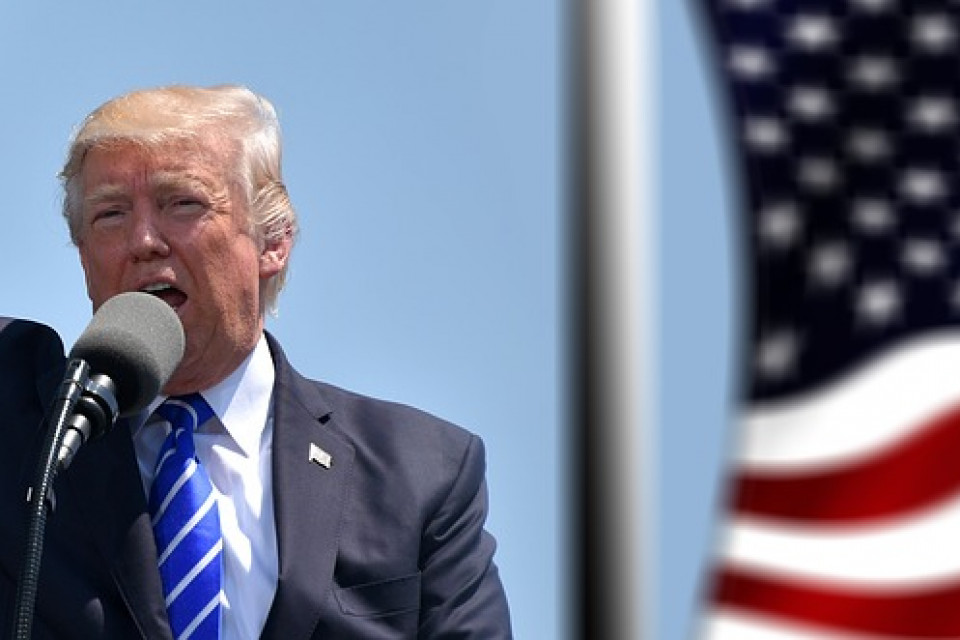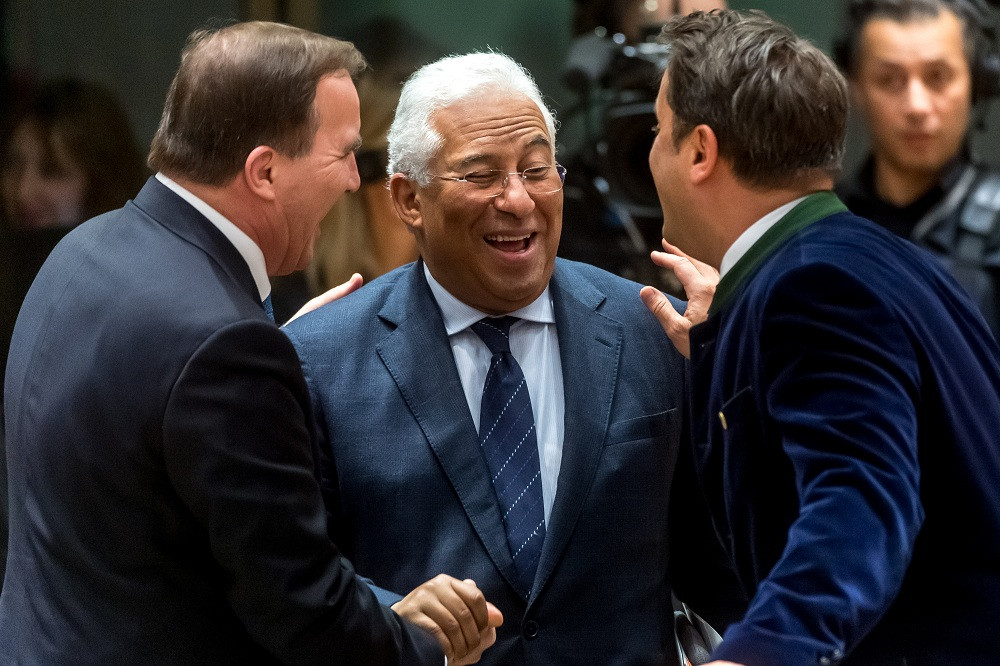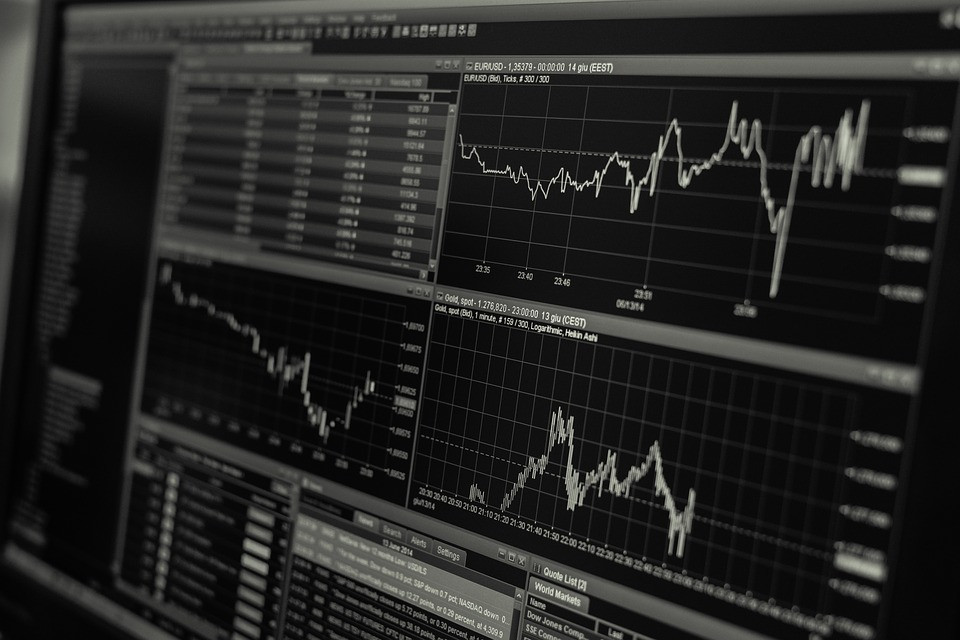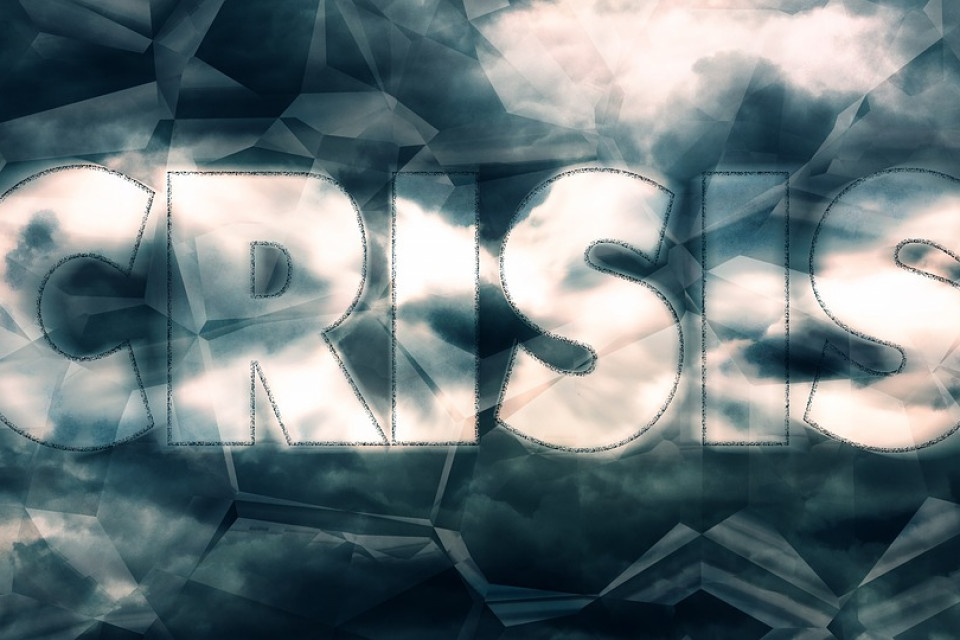The world economy should continue to grow in 2019, although less than in previous years. However, geopolitical risks accumulate and could lead to surprises.
SUMMARY
According to most forecasts, in 2019 the economic dynamism seen last year will be maintained -although with somewhat less intensity- thanks to the US fiscal stimulus, the continued injection of liquidity of the ECB, a Chinese productive transformation that continues its planned course and the recovery of oil-producing countries. However, this favourable scenario will have to endure with different geopolitical risks, among which we could highlight an intensification of the trade war between the US and China, a disruption in the so-far orderly but unstable economic transition of the latter, a greater share of power of the anti-system parties in the EU and an unresolved resolution of Brexit. Whether or not the world economy will be able to elude these threats is the main question of the year that has just begun.
ANALYSIS
From the economic point of view, the year 2019 presents a paradox: while global economic growth (and also European and Spanish) has solid foundations to maintain itself, the accumulation of geopolitical uncertainties is increasing. Thus, if the economy is able to continue ignoring the political tensions as it has done so far, 2019 should be another year of growth. Not as spectacular as in the previous three, but capable of continuing to reduce unemployment and inequality. However, if the economy begins to be infected by the political uncertainty arising from the ascension of anti-system parties, the trade war between China and the US and the fears surrounding Brexit, growth may be hindered, as the stock indices are already signalling.
The following is a brief review of the economic outlook for 2019 and the geopolitical risks that could materialize in each of the main regions.
GOOD PERSPECTIVES FOR THE WORLD ECONOMY
After a 2018 of strong global economic growth and some corrections in the stock markets (with the largest drop in US parks in the last 10 years), the baseline scenario of virtually all forecasts is that during 2019 the dynamism will continue with growth rates globally around 3.5%, lower than in recent years, but still quite strong. Both international trade, which grew by 4.2% in 2018 despite protectionist tensions, such as investment, which stood at 26.2% of GDP (the highest level since 1980), present that the world economy has sprung to life after many years in the intensive care unit. Likewise, inflation, which is an indicator of the state of health of the global economy, begins to present some signs of acceleration. The slight rise in prices is, on one hand, excellent news, because it indicates that the hangover from the crisis has been left behind (although it has not healed its scars), and contributes to reducing the real value of the high global debt (a whopping 182 trillion dollars between public and private). However, if inflation were to get out of control, central banks would be forced to raise interest rates quickly, which could slow growth and generate instability, which is particularly worrisome in the US given that it is at a more advanced stage of the growth cycle than the Eurozone.
In 2019, strong growth will be sustained by four factors: (1) the large fiscal stimulus applied in the US; (2) the continued injection of liquidity by the ECB, which, although it has ended the quantitative expansion programme, will maintain the level of its balance due to the reinvestment of its profits and, therefore, keep the money cheap and sustain the growth of the Eurozone; (3) the (relatively) orderly transformation of the production model in China, which is managing to sustain growth rates of around 6% without falling into a crisis; and (4) the growth of the countries that produce oil and other raw materials, driven by the rise in prices, which although they have fallen in the final months of 2018, remain at relatively high levels, which gives room for manoeuvre through greater income to countries like Russia, Venezuela and Saudi Arabia, among others. In addition, generalised crises are not expected in emerging markets (although Argentina or Turkey will continue to facing difficulties due to the hardening of global financial conditions and internal issues such as the stabilization plan agreed by Macri with the IMF and the distrust of the markets with respect to the economic policy of Erdoğan), and India, along with other emerging Asians, could even accelerate its growth.
More specifically, analysts' consensus points to growth rates above 2.5% in the US, slightly below 2% in the Eurozone, 1.5% in the United Kingdom (Brexit does come free), 1% in Japan and almost 5% in the collective of emerging economies (6.3% if we look only at Asia). India will grow around 7% -one point more than China-, Latin America over 2%, sub-Saharan Africa over 3.5% and the Middle East and North Africa over 3%.
This means that the synchronized growth of the last three years should be maintained, albeit with greater weakness and it will be somewhat more unbalanced.
Nevertheless, for yet another year, different economic and geopolitical risks threaten to worsen this scenario. In fact, some of these risks have already been contemplated in the latest (downward) growth forecasts of the main international organisations, which note that almost all possible surprises could be negative. The stock markets are already anticipating the same thing, which led to such a bad ending in 2018.
A QUICK LOOK AT THE RISKS BY REGION
In 2019, the US will once again be the main driver of the world economy but also the main focus of risks and instability, both because of their president's erratic policies in their obsession to change and isolate China's state capitalism, and reduce the negative trade balance with the EU, given its long expansive cycle (which if it lasts beyond June will be the most long-lasting in recent history) could be coming to an end. Its economy is overheating, as reflected in inflation above 2% and an unemployment rate of only 3.7%, the lowest in decades. Although the foundations of its growth are solid and the dynamism should continue, bringing forward an interest rate hikes by the Federal Reserve, greater tensions with China and a greater distrust of the president's economic policy (on top of which, given the new Democratic majority in Congress, there is the threat of an impeachment process whose chances of success, even in the best of cases, would be quite remote) could cause less growth. In fact, the steep stock market declines of the end of 2018 could be anticipating that the US economy can only slow down, particularly when the temporary impact of fiscal stimuli fades. Furthermore, if inflation rises unexpectedly, the Federal Reserve could be forced to raise interest rates more quickly than forecast, which bring the slowdown in activity forward, and cause a stronger dollar, generating turbulence in the foreign exchange markets, particularly for the emerging economies, and putting pressure on a highly indebted global financial system that needs low interest rates for effective refinancing.
Finally, there is a risk that the trade war that the US and China has already begun will intensify.
In line with the increasingly isolationist policy adverse to multilateralism pursued by the Trump Administration (abandonment of the Paris agreement against Climate Change, exit from the Nuclear Agreement with Iran, non-ratification of the Global Compact on Migration...), and with the twin objectives of rebalancing the trade deficit and curbing the Chinese technological boom, in 2018 tariffs of 250,000 million dollars were situated on Chinese imports, to which Beijing responded with equivalent protectionist measures, a fiscal expansion and the depreciation of its currency. If the tension were to increase and spread to other countries through international output chains, the decline in trade together with increased volatility in financial markets and the uncertainty for companies (with the corresponding fall in their investments) could come to have a significant impact on global growth.
These commercial tensions would also be to the detriment of international economic cooperation, essential in such an interdependent global economy, and in which dialogue between the US and China (to which those with the EU should be added) is essential.
As for the Asian giant, this is not the only risk that threatens its profound economic transition, implemented so far with relative steadiness going from growth rates of 10% a decade ago to rates around 6% currently without setbacks. To the frictions of this progressive deceleration, we have to add the risks linked to the excessive growth of credit, which, although it is already beginning to be countered by the authorities with different regulatory measures, in the event that they are not carried out with the necessary coordination they could have counterproductive effects on the Chinese financial system and, by extension, on the global one.
Meanwhile, the EU will maintain its growth, although it will do so with less intensity than in recent times.
In a year of European Parliament elections, designation of a new Commission, end of the of ECB's quantitative expansion policy, possible imposition of tariffs on European cars by the US and the probable (though unsafe) materialization of Brexit, all the eyes will be on the evolution of the anti-system parties vote and their economic policy decisions in case of reaching government. Italy, where an anti-system coalition already governs, is a good example of what we could have to confront: the European Commission (which is finally turned off because the vast majority of the general public do not want to leave the EU or the Euro), and because the markets do not forgive irresponsible policies) and an environment within the Union This is increasingly rarefied and uncooperative, both between the countries of the North and the South due to the issue of solidarity within the Eurozone, and among the East. (together with Italy) and those of the west due to the migratory question. In fact, the European Parliamentary elections in May will leave us with an even more fragmented European legislature, the rise of eurosceptic parties and the consequent difficulty for the Union to move towards greater integration, something This is still absolutely necessary, particularly within the monetary union.
Even so, the basic scenario is that, despite the background noise, the EU can move forward without being derailed, although it will be difficult to achieve progress due to its internal divisions.
In particular, the community project will surely not be able to give all the attention required for the reform of the governance of the single currency, climate change or the neighbourhood with a Russia whose growing hostility to the EU and NATO has increased military tensions in the Baltic. Finally, after two years of chaos, 2019 will shed some light which direction Brexit will take. A UK exit from the Union without an agreement, an unlikely but possible scenario, would have a negative impact on growth for both the United Kingdom and the EU and the world economy as a whole.
Of course, the same could be said of the possible tensions that may exist in East Asia, from the non-resolution or even worsening of the conflict between the two Koreas to the possible skirmishes of China with its neighbours or the US Navy in Taiwan and in the southern and eastern China seas. Possible scares could also come from a more aggressive Russia and an even more unstable Middle East, now that the US has decided to withdraw from Syria and Afghanistan. We will have to pay particular attention to Iran. The reestablishment by the US of economic sanctions against its energy and financial sectors is beginning to erode more, if this is actually possible, a domestic economy that in the last year has experienced intense inflation and devaluation of its currency. If this situation is not reversed, the increasingly probable social revolts that begin to happen could be perceived by the regime as a threat to its quite existence, in the face of which historical precedent indicates that the most expected reaction would be a hardening of their positions that could lead to the abandonment of the Nuclear Agreement and the toughening of relations with regional neighbours. The main one, Saudi Arabia, also faces 2019 plunged into a context of instability in anticipation of the effects that the murder of journalist Jamal Khashoggi may have on the position of Crown Prince Mohamed Bin Salmán within the hierarchy of Saudi power, to which the deterioration of image caused by controversial decisions are also contributing, such as the military intervention in Yemen or the Qatari embargo.
In any case, if oil prices increase again, the region will enjoy a resurgence, as will happen to Venezuela and Russia.
Beyond the endless Venezuelan crisis, the main unknown factor that looms large over Latin America is the repercussions that Lopez Obrador and Jair Bolsonaro may generate, ideological antipodes but with deeply rupturing programmes, at the head of the two main economies of the region. However, while the Mexican has gradually moderated their discourse and will try to avoid open conflict with the Trump Administration, the proposals of the Brazilian in favour of economic ultraliberalism and its threat to certain individual liberties could seriously disrupt the internal climate and relations with such neighbours as Mexico itself, Bolivia, Cuba or Venezuela; together with others in Central America, this latter country will continue to emit massive waves of emigrants to the rest of the continent due to their profound socioeconomic deterioration.
Finally, in Africa, while the economic, political, migratory, environmental and security crisis in the Sahel threatens to become chronic, we will have to pay special attention to Algeria and the Democratic Republic of the Congo. In the Maghrebi country, despite the fact that Abdelaziz Buteflika is running for re-election for what would be their fifth consecutive term, the uncertainty arising from their state of health and inevitable succession is increasing, while the Ebola pandemic that hits the latter, the largest in its history, threatens to spread to other surrounding countries.
In any case, although all these latent geopolitical risks are not minor, the baseline scenario remains that they will not explode this year, although logically we will always need to be ready for some unlucky black swan to appear.
BRIEF NOTE ABOUT SPAIN
In this context of an unstable calm, Spain should continue to grow at a good pace -although somewhat less than in previous years- but with some uncertainty linked to external risks (and to a lesser extent, linked to internal risks). All forecasts point to a mild deceleration of some helping tailwinds of recent years, such as low oil prices, abundance of liquidity, the economic expansion of some of its major trading members and insecurity in tourist destinations competitors in the Mediterranean.
In any case, as the inertia of the Spanish economy is significant, beyond political uncertainty, during 2019 it should continue to create employment and reduce the public deficit at a good pace. The economic impact of the endless political crisis in Catalonia will hardly be noticed, and regardless of the political scenario and the approval or not of budgets, production should increase by more than 2% unless some of the great external risks materialize, in particular a Brexit without agreement, a new crisis in Italy (or once again in Greece) that generates contagion in the south, or erratic economic policies in Mexico or Brazil, where many Spanish companies have large investments.
In fact, and even if it is not the baseline scenario, in the more than probable case that none of the risks mentioned above materialize, and if the price of oil tends to fall, the Spanish economy could once again accelerate somewhat.
CONCLUSIONS
In short, the year starts with good economic prospects but full of geopolitical bends and twists. In fact, 2019 just might be the year in which there is the greatest diversity of opinions on how the economy will go and how its main indicators will evolve.
Macroeconomic fundamentals at a global level are solid, but there are more and more voices that view the poor performance of the stock markets in 2018 as a harbinger of a new recession.
Also, there is no consensus among analysts on whether the price of oil, which is usually a good indicator of the strength or weakness of the global cycle, will rise or fall. Finally, there are those who think that since the US economy and that of the northern countries of the Eurozone is operating with a positive output gap, inflation will begin to accelerate, while according to others we will continue to see quite moderate price increases despite of high liquidity, as we have done during the last decade.
What will probably determine if 2019 closes with better or worse results than those presented here (and which constitute the most likely scenario) will be the evolution of confidence and expectations. As early as 1936, John Maynard Keynes wrote:
"Even apart from the instability due to speculation, there is the instability due to the characteristic of human nature that a large proportion of our positive activities depend on spontaneous optimism rather than mathematical expectations, whether moral or hedonistic or economic. Most, probably, of our decisions to do something positive, the full consequences of which will be drawn out over many days to come, can only be taken as the result of animal spirits - a spontaneous urge to action rather than inaction, and not as the outcome of a weighted average of quantitative benefits multiplied by quantitative probabilities".
If these risks do not materialize and the feeling of uncertainty dissipates, the animal spirits that Keynes talked about will raise consumption and investment, making 2019 another good economic year.
On the contrary, if pessimism prevails, we could enter into a dynamic of self-fulfilling expectation, in which the economy ends up exhibiting poor behaviour precisely because everyone expects it to do so.
Nobody knows when the next recession will arrive, but surely it will not be in 2019 and, in any case, when it does arrives, it will not be as severe as the last one. Sometimes we forget that the major financial crises such as that of 2007-2009 (which generated the Euro crisis in 2010-2013) only occur every 100 years.











